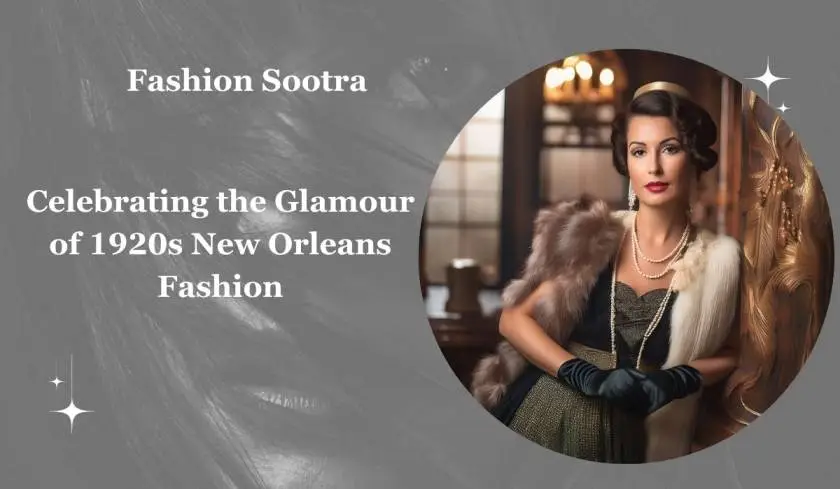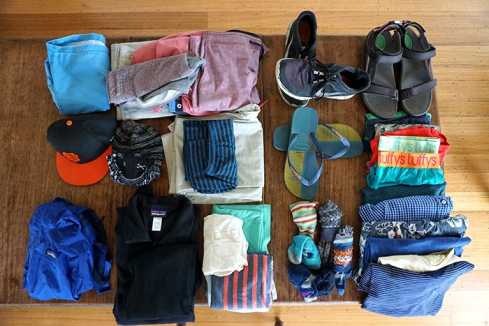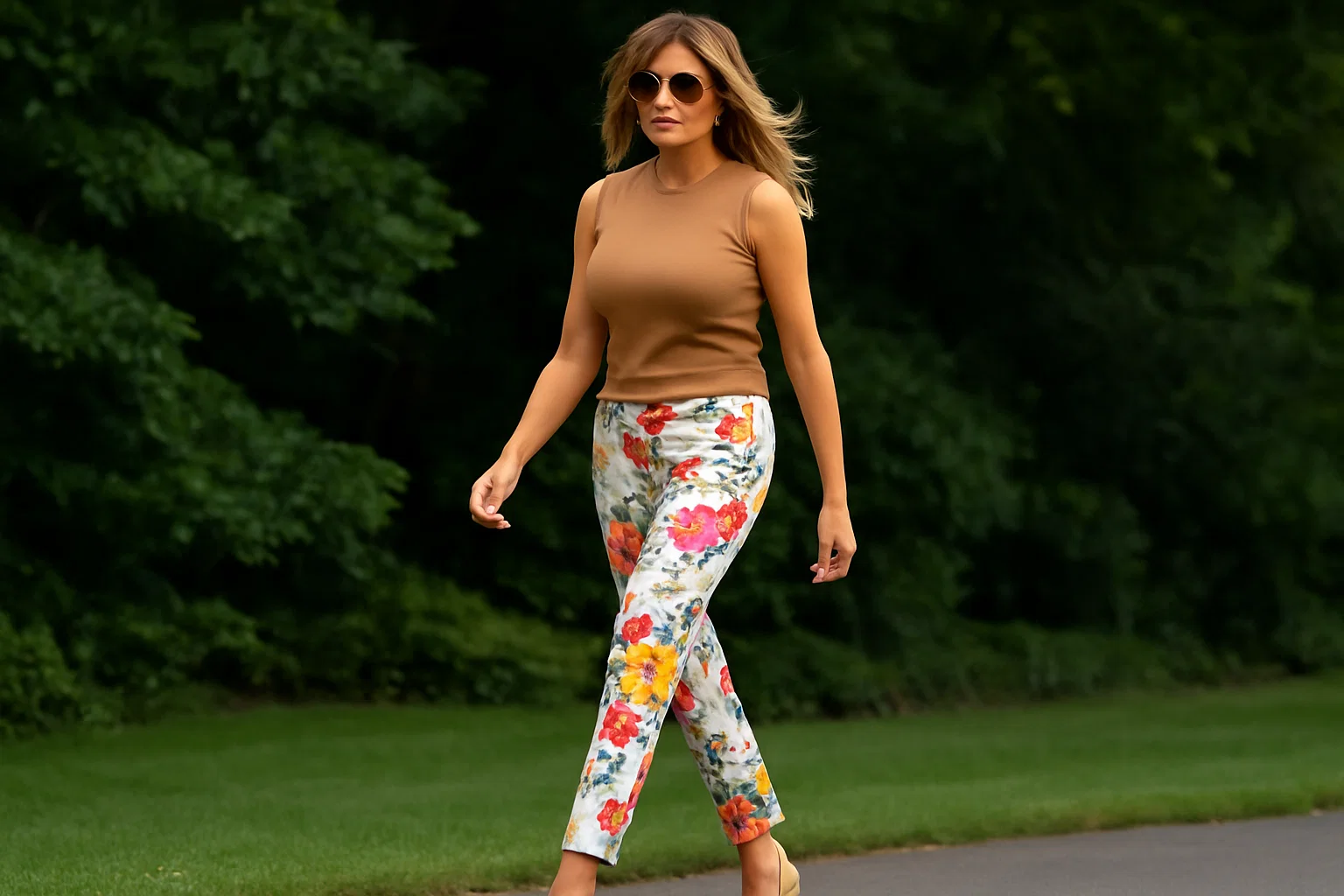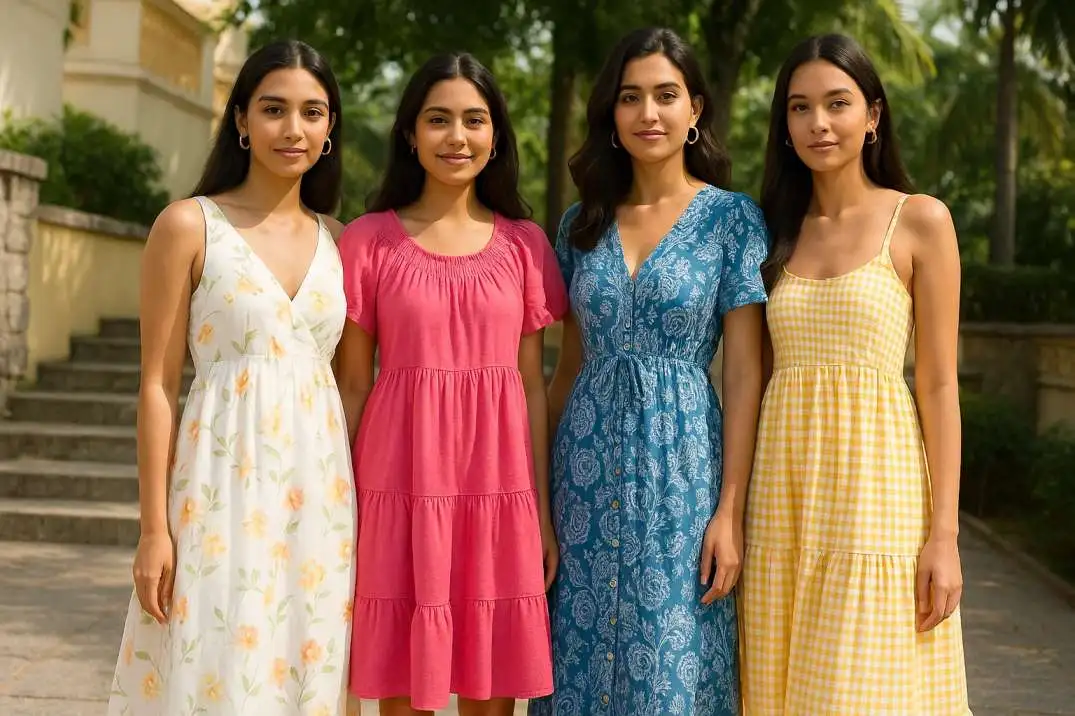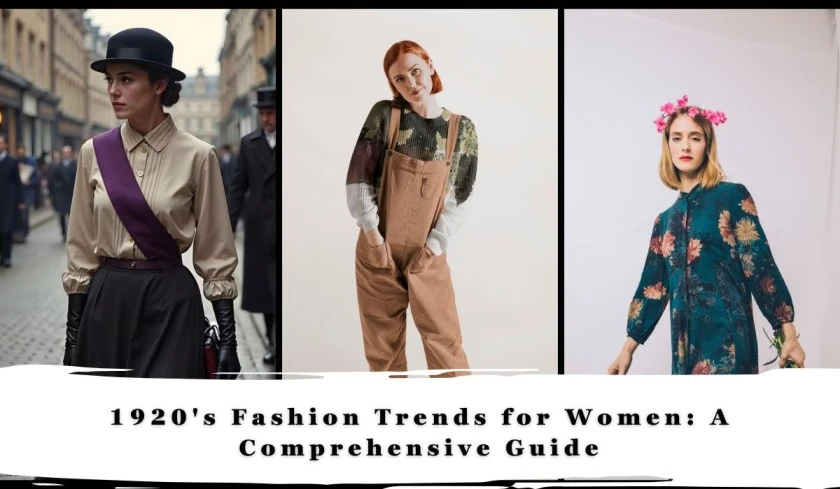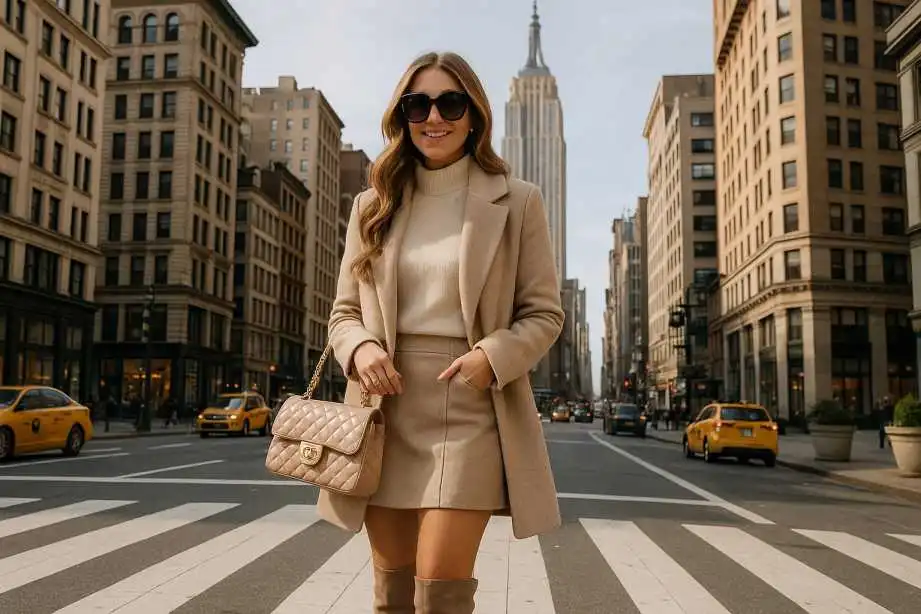Known as the age of jazz, flapper and the Roaring Twenties, the 1920s new Orleans fashion was a decade of great change and great energy. Of all the cities in America, New Orleans was one of the most successful at embracing this time of change.
New Orleans had a world of culture, jazz music, and the new sophistication of an international city and became the place for fashion new arrivals from the North and the South. Alright let me return to designing, let visit the world of glamorous 1920s fashion in New Orleans!
What Is A 1920s New Orleans Fashion?
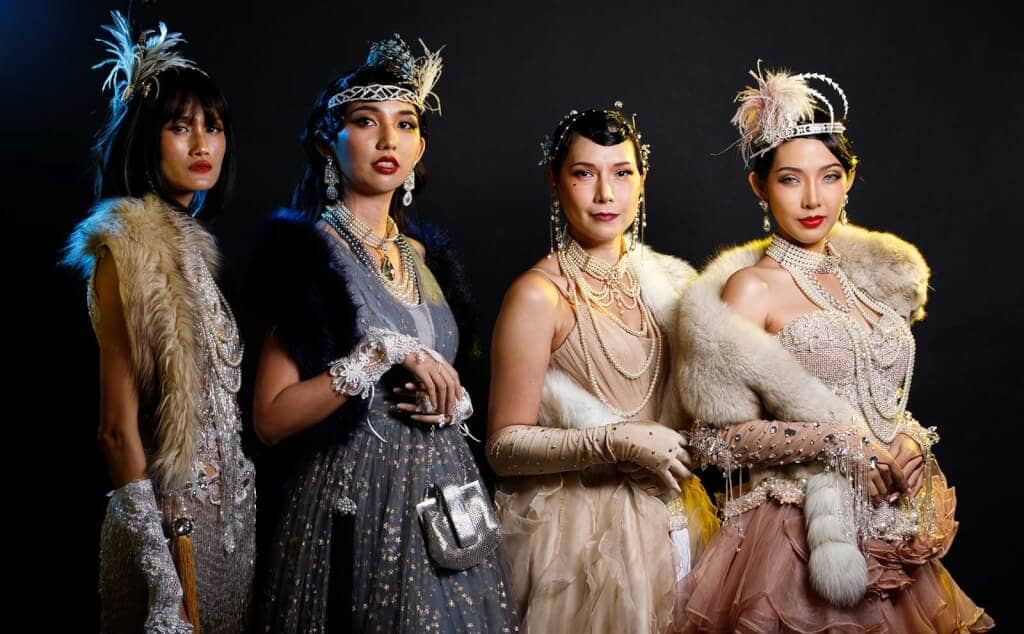
As a style that defines new Orleans fashion 1920s, it is rich with atmosphere of the Jazz Age, sweet polite smile of the Southern belle, and hint of exotic exotic blood in the veins. As the birthplace of jazz, New Orleans was an energetic city in the 1920s for music, art and joy and so was its fashion.
The Jazz Age Influence
The soul of fashion that came out of 1920s new Orleans fashion was jazz music. The city considered as full of active streets and famous jazz clubs, which eventually affected not only the sound of music but also the fashion. New Orleans had thousands of night clubs and parties all over the place and fashion is a true reflection of newer, freer and bolder.
According to Davis, Flapper Fashion meets Southern Charm:
Perhaps one of the hottest fashion statements in the 1920s new Orleans fashion was the “Flapper”. Flappers were young women who refused to dress and behave like women of the generations before them. In New Orleans, however, the flapper style was modify because of the warm and humid climate in Louisiana. The wardrobe of the New Orleans flapper did not include pellons and fancy head-gears as many people would have expected.
Read Also: Fashion Magazine Design Brief Example: A Comprehensive Overview
Fashion – The loosely fitting straight dress with a low waistline was the most identifying costume of the liberated flapper of the second decade of the 20th century . The fringe gear the dresses thus had on them such as the fringe, beads, and sequins reflected dori on the clubbing and the spirit of the city. These dresses were mainly paired with bright colors in New Orleans, or floral prints in order to capture the beauty of the environment in the City.
Headwear and Accessories – The bobbed hairstyle was also in New Orleans, but most Southern Women wore it with more of the natural curl wearing combs or head bands. The cloche hats or wrap-around scarves especially those which where made from satin or velvets formed the ideal head apparel for women dressed for evenings.
Men’s Fashion in 1920s New Orleans
If the flapper style characterized women’s fashion of the 1920s new Orleans fashion, menswear went through a revolution too. Stepping up, gentlemen of New Orleans wore less starched and formal attire. Jazz musicians had much to do with this as did the overall melting pot culture of the city which coated a more prim and proper East Coast with that little bit of sexy Southern comfort.
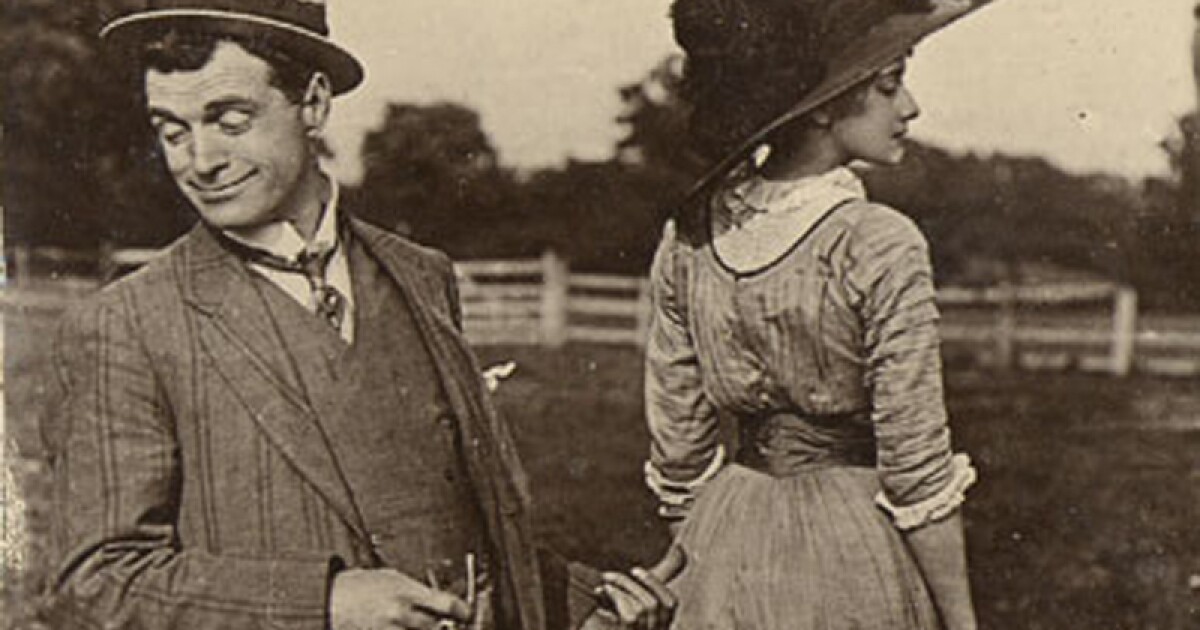
Suits & jackets – Men used to wear three piece suits having wide lapels with a very laid back comfort. The amount of demand people had for Jazz musicians and their need for migrating from one place to another, made the Men’s wear look and feel very fluid and comfortable. A white dinner jacket which is usually accompanied by black trousers was made part of the glamorous lifestyle of the period.
Read Also: What Are the Best Styles for Beauty Pageant Dresses?
Casual wear and accessories – Due to a warm climate of cities, men preferred light materials like linen or seersucker for business casual wear. These materials provided rein, comfort and this is as important for someone to look smart and at the same time keep cool. Things like bow ties, pocket squares, suspenders were just what came as the last layer of sophistication to any look.
The Influence of New Orleans’ Creole and African-American Communities
The community’s rich Afro-Creole influence also had an influence on the fashion of the specified period. French Gothic Revival amalgamated with Pre-Columbian, Spanish Colonial, African, and West Indian all fused together and gave birth to a style that was typical new Orleans fashion 1920s, simple but passionate. The liveliness of the culture within the city could also be felt in the seventeenth-century types of clothing and fashion accessories, embroidery, and jewelry.
The African-Americans were very influential in the fashion trends within the notable period. While during the jazz musicians and artists, performers themselves were pioneers in constructing this style of the exterior. There are still many things that are derivative of New Orleans’ African-American identity; things like the vivid, loud colors, the prints, and loud; loud pieces like an oversized hat or coat with fur on them.
Southern Elegance Meets the Roaring Twenties
Now, to come to the 1920s New Orleans fashion, yes, the times here were also characterized by flapper style and jazz age but apart from it the place reeled in southern traditions. New Orleans women tried to maintain sophistication and refinement of Southern belle while following the freedom, and playful vibe of the Jazz age.
Tea Dresses and Daytime Fashion – In the curse of the day, women in New Orleans wore tea length dress that were made from cotton or silk and accessorized them with lace or crochet gloves. As I walked around the French Quarter it was rather frequent to notice women wearing attractive dresses moving around with parasols or ‘pretty necklaces.
Evening clothes = Evening attire – As for the evening wear, New Orleans women had floor length gowns which were made from satin fabrics and velvet, silk as well. The gowns with sequins, beading or decorative embroidery were common on the women of the period. New Orleans was famous for its sparkling balls and galas and the nightlife of the twenties; women wore the ultimate flapper dress in chauffeured cars.
From the bobbed brunette skin tight dancing dresses of the the famous flappers to the sharp looking tuxedo-donning dapper G-men, New Orleans fashion of the 1920s was spirited, fresh and dynamic an art form reflective of this period’s most memorable and lively moments – music, art and fashion which have impacted the world today.
Understanding the New Orleans Fashion 1920s
Everyone mentioned the years that would follow 2020 as being somewhat similar to the new Orleans fashion 1920s. And it most surely feels partly true. Not because bootleggers or flappers abound, but rather because there is a broad sense of grandeur returning at least in terms of dress code.

Bold, geometric, and—often highly glittery and sequined—looks defined the Art Deco style of the era Women were celebrating joining the workforce by dancing on club floors and using their wages at Chanel, shopping for clothes that let them move naturally.
Related Post: Where Fig Leaves First Came Into Fashion?
Leading fashion designers of the day clearly demonstrated the changing status quo in their creations. In their ateliers, couturiers like Coco Chanel, Paul Poiret, Jean Patou, and Jeanne Lanvin produced styles that drew components from menswear and refined them into frocks with far more razzle-dazzle. Consider blazer dresses and skirt suits.
And right now, that particular look is rather popular. People want an excuse to dress all the way up after living in sweatpants for nearly three years. Every time we're allowed to step outdoors and accomplish something in person feels like enough of a cause to dress like a character from The Great Gatsby, the Ziegfeld Follies, or Metropolis. Along with items you may purchase now to replicate the Roaring Twenties, we highlight our favorite images and trends that defined the era here.
Top 5 + Best 1920s New Orleans Fashion 2025
1: Flapper Dress
Of the various fashion styles that emerged out of the 1920s, it is the flapper dress that maintains to rule supreme. The style, called for the women who wore it, is defined by a simple and loose design with a drop waist that drops right below the knee.
It was developed by designers Coco Lagerfeld and Paul Poiret, both of whom tried to infuse a masculine sense to womenswear. To wit: The teenager is also known as la garçonne, meaning “boy” in French.
As daywear, the flapper generally included sleeves and a pleated or layered skirt constructed out of cotton jersey. with the evening, the garment was adorned with rhinestones, layers of fringe, or beautiful embroidery with Art Deco patterns. Poiret’s designs are a fantastic illustration of the latter, whereas Chanel's collections represented the former. Either way, the design permitted ladies to move freely and wiggle on the dancing floor, instantly captivating the starlets of the moment.
2: Chemise
With the baggy outline and short hemlines of the flapper dress, ladies required underpants to coordinate. Gone were the constrictive bodices, unnecessary slips, and long drawers. The men won't hit the dance floor with you on the off chance that you wear an undergarment, an aggregate of flappers told The New York Times in a 1920 report. Something relatively simple was liked, and that is the thing the chemise gave.
The underwear comprised of an unfitted short slip, frequently made from silk or silk crepe de chine, which was not difficult to, indeed, slip on. Its shape, notwithstanding, was the main thing basic about it. A chemise during the 1920s highlighted Chantilly trim, tulle overlays, picot edging, flower weavings, and strips. The style heaped on every one of the fragile and extravagant decorations we currently expect of the best underwear.
3: Cardigan
However named after James Thomas Brudenell, the seventh Lord of Pullover, the advanced sweatshirt owes its unmistakable quality to the spearheading endeavors of Coco Chanel. The fashioner was taken by the effortlessness of the sewed petticoat noble men wore, trying to carry that feeling of straightforwardness to the ladies she dressed.
As indicated by legend, Chanel cut an old sweater herself and sewed a lace to the collar. She was all the while advancing active apparel and the flapper dress, and her model followed a similar loosened up vibe.
Her main goal was to zero in on styles that permitted her clients to move without limitations, shunning the lumbering abundances that described ladies' design earlier. As French pundit Lucien François composed, When Mademoiselle Chanel gets to paradise, she will most likely force her pullovers and little shirt shifts on the Princesse de Cleves and Marie Antoinette.
4: Cocoon Coat
It was a wrap for coats during the 1920s in a real sense. The decision clincher for ladies in the Jazz Age encompassed the body in squashed velvet or rich sable, civet, or mink furs, behaving like a cover (consequently the name). Paul Poiret, specifically, displayed pieces that truly brought the show. The architect might have initiated smoothed out dresses, however his jackets were about volume and highlighted articulated pelts on the necklines, sews, and sleeves.
The size and material of these clinchers are maybe immediate aftereffects of what was under. On the off chance that the dresses were short and made of lightweight textures, the coats should have been hard core to endure the harsh virus come winter. However, in the period of razzle-astonish, utility essentially didn't cut it. Outfits expected to say something, and cover coats stuffed the intensity in additional ways than one.
5: Long Pearl Necklace
Pearls have for quite some time been related with eminence and honorability. For sure, it was just the very rich who could bear the cost of strands made with the interesting and valuable jewels. Yet, during the 1920s, diamond setters had the option to re-make pearls falsely, permitting the majority to pervade a feeling of magnificence without burning through every last dollar.
"The spot of gems changed on the grounds that ladies' lives fundamentally different," Evelyne Possémé, boss guardian of the Workmanship Deco and adornments division at the Musée des Expressions Décoratifs in Paris, told The New York Times in 2012. "Valuable gems was not generally appropriate for a day to day existence where ladies could drive, smoke, shop alone."
Goldsmith Augustine Gripoix, for one's purposes, had the option to mold pearl copies out of glass. She opened her store in the last part of the 1800s and quickly began getting orders from socialites and entertainer Sarah Bernhardt. By the '20s, her little girl assumed command over the brand and started teaming up with driving style fashioners, including Jeanne Lanvin, Paul Poiret, and Coco Chanel.
6: Robe De Style
The flapper wasn't the main dress to influence the 1920s and then some. Throughout the span of the ten years, Jeanne Lanvin's robe de style a dress that, similar to the flapper, included a drop midsection and chemise-style top, however had a full, lower leg brushing skirt all things considered turned out to be famous to the point that other maisons followed after accordingly.
Until this last season, robes de style were synonomous with the name Jeanne Lanvin, a report distributed by The New York Times in 1927 peruses. "As no other Paris originator endeavored this sort of outfit with its full skirt and fitted abdomen, this gallant dressmaker developed an advantageous customers on this outfit alone with the outcome that now basically every individual from the Paris couture is showing robes de style.
7: Geometric Jewelry
At the 1925 World's Fair in Paris, the "Global Display of Present day Embellishing and Modern Expressions" made its presentation at the Fantastic Palais, introducing the Craftsmanship Deco style. Impacted by the mathematical structures and strong varieties tracked down in different social orders across time from old Egypt and China to the Vienna Withdrawal and Bauhaus school in Germany the theme turned into the apex of present day plan in the 10 years. Also, abilities in the realms of compelling artwork, engineering, item plan, and design spread that message all over.
Driving the manner in which on the gems front were siblings Louis, Pierre, and Jacques Cartier; Alfred Van Cleef and his father by marriage, Salomon Arpels; and Georges Mauboussin.
These joailliers introduced groups of jewels and distinctive valuable stones on rakish gold or platinum settings, gathering armies of fans en route. One gems lover of note was entertainer Gloria Swanson, who gathered various pieces from these adornments houses.
8: Cloche Hat
Hairdos during the 1920s, similar as the design, followed an innocent tasteful. Long locks were stopped and supplanted with bounces, while whimsical caps were shunned for a style that was in accordance with the pattern of the 10 years. Enter the cloche cap: a chime molded chapeau that fit the scalp to T.
Milliners like Caroline Reboux, Lucie Hamar, and Gage Siblings and Company frequently made cloche caps out of felt, once in a while straw, and planned them to fall right over the eye.
They additionally worked with couturiers to make supplements to their flapper dresses and athletic apparel gowns. Furthermore, on the grounds that it was the period of style and glitz, ladies would frequently add shimmering ornaments to finish their looks.
Conclusion
Fashion in 1920s new Orleans fashion was enhancement of fashion as reflecting personality of an individual and as showcasing a particular culture. The unique personality of the city, the Southern Heraldic sophistication, conjuncture of the African-American culture and the Jazz Era produced a playful yet sophisticated voguish-air to the fashion of the shallowing fifties.

